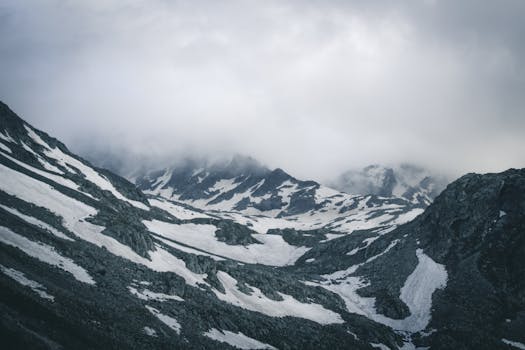Working with Reflections in Nature
Reflections in nature provide photographers with a unique opportunity to capture stunning and surreal images. These reflections, whether found in still water, glass, or other reflective surfaces, can transform ordinary scenes into extraordinary visual experiences. Knowing the methods to work with these reflections can elevate your photography skills and help you create breathtaking compositions.

When photographing reflections in nature, you are not just capturing the landscape but also its mirrored counterpart. This duality adds depth and complexity to your images, making them more engaging and visually appealing. Techniques such as adjusting the angle of your shot, using polarizing filters, and choosing the right time of day can significantly impact the quality of the reflections you capture.
Additionally, reflections can be used creatively to convey emotions or tell a story within a photograph. The symmetry they create often evokes a sense of balance and harmony, while distorted reflections can add an element of mystery or surrealism. Perfecting the skill of capturing reflections requires both technical knowledge and an artistic eye, making it a rewarding challenge for photographers at any skill level.
Choosing the Right Location
The first step in capturing stunning reflections is selecting the right location. Bodies of water such as lakes, ponds, and rivers are ideal for reflection photography. Look for calm waters where the surface is undisturbed by wind or movement, as this will produce clearer reflections.
Urban environments also offer numerous opportunities for reflection photography. Glass buildings, puddles after rain, and even polished surfaces can reflect cityscapes beautifully. When exploring urban areas, pay attention to how light interacts with different surfaces throughout the day.
Natural landscapes such as mountains and forests reflected in water can create dramatic and awe-inspiring images. National parks and scenic viewpoints often provide excellent opportunities for capturing these types of reflections.
Regardless of the location, always scout the area beforehand to identify potential reflective surfaces and determine the best angles for shooting.
Time of Day and Lighting Conditions
Lighting plays a crucial role in reflection photography. Early morning and late afternoon are typically the best times to capture reflections because the light is softer and more diffused. During these times, known as the golden hours, the sun is lower in the sky, creating warmer tones and longer shadows that enhance the overall composition.
Overcast days can also be beneficial for reflection photography. The diffused light from cloud cover reduces harsh shadows and highlights, resulting in more even exposure across your image.
Avoid shooting during midday when the sun is directly overhead. The harsh light can create strong contrasts that may overpower the reflection and make it difficult to achieve a balanced exposure.
Experimenting with different lighting conditions will help you understand how light affects reflections and enable you to choose the best time for your shoots.
Using Polarizing Filters
A polarizing filter is an essential tool for any photographer working with reflections. This filter reduces glare from reflective surfaces, such as water or glass, allowing you to capture clearer and more vibrant reflections.
To use a polarizing filter effectively, attach it to your lens and rotate it until you achieve the desired level of polarization. You will notice that as you rotate the filter, glare diminishes, and colors become more saturated.
Keep in mind that polarizing filters are most effective when used at a 90-degree angle to the sun. Experiment with different angles to see how they affect your reflections.
Polarizing filters can also enhance skies by deepening blue tones and increasing contrast between clouds and sky, adding an extra layer of interest to your reflection photos.
Composing Your Shot
Composition is key to creating compelling reflection photographs. One effective technique is to use symmetry by placing the horizon line in the center of your frame. This creates a mirror effect where the landscape above is perfectly reflected below.
If you prefer a less conventional approach, consider using leading lines or framing elements within your composition. For example, rocks or trees along the water's edge can guide the viewer's eye towards the reflection.
Experiment with different perspectives by changing your shooting angle or height. Sometimes getting closer to the ground or shooting from an elevated position can reveal interesting patterns and details within the reflection.
Don't be afraid to break traditional composition rules if it results in a more dynamic image. The goal is to create balance between reality and its reflection while maintaining visual interest.
Editing Reflections
Enhancing and tweaking plays a significant role in enhancing reflection photographs. Software like Adobe Lightroom and Photoshop offer powerful tools for refining your images.
Start by adjusting basic settings such as exposure, contrast, and saturation to bring out details in both the landscape and its reflection. Use gradient filters selectively to balance exposure between sky and water if needed.
If there are distractions or imperfections in your reflection (e.g., floating debris), use cloning tools to remove them seamlessly without affecting overall composition.
You can also experiment with creative edits like adding vignettes or adjusting color tones selectively within specific areas of your image—this helps draw attention towards key elements within your photo while maintaining harmony between reality & its mirrored counterpart!
| Tips | Description |
|---|---|
| Select Calm Waters | Look for bodies of water where surface movement is minimal to achieve clear reflections. |
| Shoot During Golden Hours | Early morning & late afternoon light enhances colors & shadows in your photos naturally! |
| Utilize Polarizing Filters | This essential tool reduces glare & enhances color saturation effectively! |
| Experiment With Angles | Changing perspectives reveals unique patterns/details within reflective surfaces creatively! |
Working with reflections in nature offers endless possibilities for creative expression through photography! By understanding key techniques like selecting locations carefully considering lighting conditions using polarizing filters composing shots thoughtfully editing effectively—you'll be able capture stunning images that showcase beauty found both above below surface equally well!